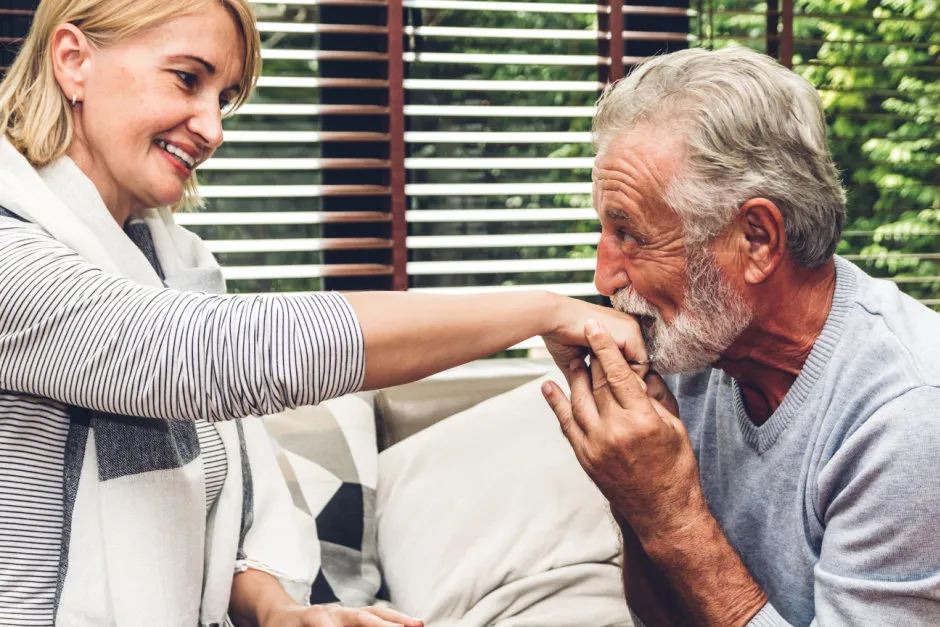What is the Honeymoon Stage?
The honeymoon stage, often idealized in romantic comedies and love stories, represents the initial phase of a relationship characterized by intense passion, excitement, and idealization. During this period, couples often experience heightened emotional connection, infatuation, and a strong desire to spend all their time together. This phase is marked by a blurring of individual boundaries as partners focus on each other, often overlooking minor flaws and conflicts. Hormones like dopamine and oxytocin flood the system, contributing to feelings of euphoria and bonding. It’s a time of discovery, where everything about the partner seems fascinating and new, and every interaction is charged with positive emotion. This stage usually lasts for several months to a couple of years, but the duration varies from couple to couple. Understanding this stage is crucial as the subsequent transitions signal natural shifts in a relationship dynamic.
Common Characteristics of the Honeymoon Stage
Several key characteristics define the honeymoon stage, setting it apart from later relationship phases. One of the most prominent is the constant desire for intimacy and closeness. Couples are inseparable, eager to share every aspect of their lives. Another characteristic is idealization, where partners tend to focus on each other’s positive qualities, minimizing or ignoring flaws. Communication is often frequent and enthusiastic, with partners sharing deep thoughts and feelings with ease. There’s a heightened sense of excitement and novelty, with each day feeling like an adventure. Everyday activities are exciting, and every conversation feels novel. The focus is mainly on the positive aspects of the relationship, making it easy to overlook potential issues. Finally, there is often a higher tolerance for differences, as partners are more willing to accommodate each other’s preferences and habits during this time.
Sign 1 The Romance Has Faded

One of the most noticeable signs that the honeymoon stage is ending is a decline in romantic gestures and feelings. Initially, couples might shower each other with gifts, compliments, and spontaneous displays of affection. As time progresses, these gestures may become less frequent or disappear entirely. The intense passion and excitement that once fueled the relationship begin to wane, and the couple may find themselves feeling less enthusiastic about spending time together. The initial spark that drew them together might seem to dim, and the focus shifts from grand romantic gestures to more mundane routines. It’s important to distinguish between a natural shift in the intensity of romance and a complete loss of romantic connection, understanding that a healthy relationship evolves.
How to identify a fading romance
Identifying a fading romance involves recognizing changes in behavior, communication, and emotional connection. Watch for a decrease in physical affection, such as fewer kisses, hugs, or intimate moments. Pay attention to the frequency and quality of compliments and words of affirmation. If you or your partner are no longer expressing appreciation or admiration, it could signify a shift. Observe how you both engage in planning dates or special events. If the effort to create romantic experiences dwindles, it’s a sign. Finally, monitor the emotional climate of your interactions. Increased irritability, lack of interest in each other’s lives, or a general sense of detachment can all point to a decline in romance. Open communication and awareness are key to identifying these subtle changes before they escalate into larger issues.
What can be done to reignite romance
Reigniting romance requires intentional effort and a willingness to reconnect. Start by making time for regular date nights or special outings. Plan activities that you both enjoy and create opportunities for shared experiences. Reintroduce physical affection with simple gestures like holding hands, hugging, or cuddling. This helps to rekindle physical intimacy. Communicate your needs and desires openly. Express your appreciation for your partner and share compliments regularly. Try surprising your partner with small, thoughtful gifts or gestures. Remember, the goal is to create a sense of novelty and excitement in your relationship. Finally, prioritize intimacy, both physical and emotional. Focus on creating a safe space for vulnerability and connection, making romance a conscious part of your relationship.
Sign 2 Communication Patterns Changing

Changes in communication patterns are another key indicator that the honeymoon phase is ending. During the honeymoon stage, communication is often frequent, open, and filled with enthusiasm. As the relationship evolves, the style and frequency of communication might change. Couples may start to communicate less frequently, and conversations may become more focused on practical matters rather than emotional connection. Tone can become less affectionate, and the willingness to discuss deeper feelings might diminish. Misunderstandings can become more common as people might become less attentive to what their partner says. It’s essential to note that this shift is natural, but it can signal problems if not managed carefully. This shift requires increased awareness and changes to ensure open and healthy dialogues.
What does healthy communication look like
Healthy communication in a relationship involves active listening, empathy, and clear expression of thoughts and feelings. It’s about creating a space where both partners feel safe and respected. It means listening to understand, not to respond, paying attention to both verbal and non-verbal cues. Healthy communication means expressing your feelings in a calm and non-accusatory manner, using “I” statements. Empathy is also key; try to see things from your partner’s perspective. Regular check-ins and open dialogues about needs, expectations, and concerns are important. Conflict resolution is also a part of healthy communication. This includes discussing issues without resorting to personal attacks or defensiveness and focusing on finding solutions together. It’s a continuous process of learning and adapting to each other’s communication styles.
How to improve communication
Improving communication requires conscious effort and practice. Start by scheduling regular times to talk without distractions, like a dedicated date night or a daily check-in. Practice active listening by giving your partner your full attention. Encourage your partner to express their thoughts and feelings openly, creating a non-judgmental environment. Learn to express your needs and concerns using “I” statements, focusing on how you feel. It’s important to avoid blaming or accusing. Seek professional help if communication issues persist. Relationship counseling can provide tools and strategies for better communication. Finally, remember that communication is a skill that improves with practice and consistency. Be patient with each other and celebrate progress as you improve your communication.
Sign 3 Less Time Spent Together

During the honeymoon stage, couples often spend a great deal of time together. As the relationship progresses, it’s normal for this to change. But when a decline in the time spent together becomes drastic, it can signal that the honeymoon stage is over. When partners are no longer prioritizing time together, it can indicate a shift in priorities or waning interest. The frequency of date nights, shared activities, and even casual conversations may decline. Each partner might become more focused on their individual interests, hobbies, or social circles, spending less time building a shared life. While some independence is healthy, a significant decrease in shared time can create distance and erode emotional connection. It is also important to look for the reasons why people are spending less time together.
Why is it important to spend time together
Spending quality time together is vital for maintaining a strong and healthy relationship. It fosters emotional intimacy, allowing partners to connect on a deeper level. Shared experiences create memories, strengthen bonds, and provide common ground for conversation and connection. Activities like having shared meals, going on trips, or simply relaxing together build a sense of togetherness and shared identity. Regular interaction allows you to stay connected to your partner’s life, interests, and feelings. Taking time together helps to maintain a positive and supportive relationship. Additionally, it is important to make time for each other. It helps to navigate any conflicts that arise by reinforcing the partnership’s core values.
How to make time for each other
Making time for each other requires intentionality and planning. Schedule regular date nights or weekend getaways to create opportunities for connection. Incorporate shared activities into your routines, such as cooking together, watching movies, or exercising. Even short periods of quality time, like having a cup of coffee together in the morning or talking before bed, can make a difference. Prioritize each other’s needs and interests, making an effort to be present and engaged when you’re together. Turn off distractions, such as phones and social media, to focus on each other. Be flexible and willing to adjust your schedules to accommodate each other. Finally, remember that making time for each other is an investment in the relationship’s future, which strengthens the connection between partners.
Sign 4 Conflicts Are More Frequent

During the honeymoon stage, conflicts are often minimized or quickly resolved. As the initial infatuation fades, differences in personalities, values, and expectations become more apparent, leading to an increase in conflicts. These disagreements might arise over everyday matters, such as household chores, finances, or social activities. The frequency and intensity of arguments can also increase. Couples might find themselves disagreeing more often and struggling to resolve conflicts peacefully. The underlying issues leading to these conflicts often go unresolved, creating a pattern of tension and resentment. A rise in conflict doesn’t necessarily mean the end of the relationship, but how these conflicts are handled is critical.
What are the causes of conflict
Conflicts in a relationship can arise from various sources, including differing opinions, unmet needs, and unresolved issues. Differences in values, beliefs, or lifestyle preferences can lead to disagreements. Stress from external factors like work, finances, or family issues can also contribute to conflict. Unrealistic expectations, such as those fueled by the honeymoon stage, can lead to disappointment and friction. Poor communication, including a lack of active listening or expressing feelings constructively, can escalate misunderstandings into full-blown arguments. Additionally, unaddressed resentments, arising from past hurts or perceived injustices, can fester and lead to recurring conflicts. Recognizing the root causes of conflict is the first step in addressing them and finding effective solutions.
Strategies for managing conflict
Managing conflict effectively involves adopting healthy communication and problem-solving strategies. Stay calm, even when you are angry, to promote clear thinking. Practice active listening by paying attention to your partner’s perspective and showing empathy. Avoid personal attacks, defensiveness, and blaming, instead, focus on expressing your own needs and feelings. Identify the root cause of the conflict, rather than just addressing the symptoms. Work together to find mutually acceptable solutions, compromising when necessary. Take breaks when needed to cool down and revisit the issue later. Consider seeking professional help from a therapist or counselor if conflicts become persistent or overwhelming. By adopting these strategies, couples can navigate conflicts more effectively and strengthen their relationship.
Sign 5 The Future Feels Uncertain

During the honeymoon stage, the future often seems rosy and full of possibilities. As the relationship progresses and the honeymoon phase fades, uncertainty about the future may arise. Questions about long-term commitment, career goals, family planning, and other major life decisions can surface. The partners might have different visions for the future, leading to anxiety and stress. This uncertainty can be intensified by external pressures, such as family expectations, financial constraints, or societal norms. When the future feels uncertain, it can impact the trust in the relationship. Overcoming uncertainty involves open communication, planning together, and making decisions that align with both partners’ values and goals. A shared vision for the future can help to strengthen the bond and navigate the changes of the relationship.
How to navigate uncertainty
Navigating uncertainty requires open communication, shared goals, and a willingness to compromise. Discuss your individual hopes, dreams, and expectations for the future. Identify shared values and vision for life. Create a long-term plan together, even if the plan is to adapt to life as you go. Be honest about your concerns and willing to compromise, recognizing that each partner might have different priorities or timelines. Establish trust and build a support system, including friends, family, and potentially a therapist. Regular check-ins and adjustments to ensure the relationship stays on track are also helpful. By embracing the unknown and facing the future together, couples can strengthen their bond and navigate the transitions. Having an honest discussion about each other’s expectations is a key factor.
Building a Stronger Relationship After the Honeymoon Stage
Transitioning beyond the honeymoon stage presents an opportunity to build a deeper, more resilient relationship. Embrace the shift by understanding that it’s normal for the intensity to change. Focus on strengthening your connection through open communication, mutual respect, and shared activities. Prioritize quality time together, even in small doses, to maintain intimacy. Continue to express affection and appreciation, ensuring your partner feels loved and valued. Address conflicts constructively, practicing active listening, empathy, and compromise. Set realistic expectations, recognizing that relationships evolve over time. Celebrate each other’s individual growth and support each other’s dreams. By focusing on these core principles, couples can build a long-lasting and fulfilling relationship that thrives beyond the honeymoon stage. This period is an opportunity to create a bond that is much deeper and much more meaningful.
